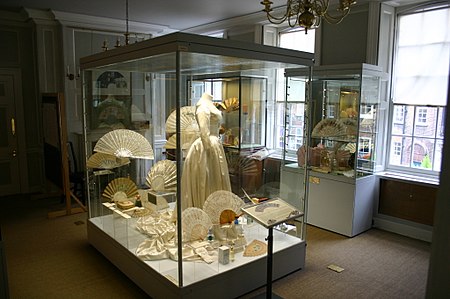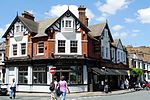Fan Museum
1991 establishments in EnglandFashion museums in the United KingdomGrade II* listed buildings in the Royal Borough of GreenwichGrade II* listed museum buildingsMuseums established in 1991 ... and 3 more
Museums in the Royal Borough of GreenwichUse British English from November 2015Ventilation fans

The Fan Museum, which opened in 1991, is the world's first museum dedicated to the preservation and display of hand fans. It is located within two grade II* listed houses that were built in 1721 within the Greenwich World Heritage Site in southeast London, England. Along with the museum, there is an orangery decorated with murals, a Japanese-style garden with a fan-shaped parterre, a pond, and a stream.
Excerpt from the Wikipedia article Fan Museum (License: CC BY-SA 3.0, Authors, Images).Fan Museum
Gloucester Circus, London East Greenwich (Royal Borough of Greenwich)
Geographical coordinates (GPS) Address Nearby Places Show on map
Geographical coordinates (GPS)
| Latitude | Longitude |
|---|---|
| N 51.478611111111 ° | E -0.0077777777777778 ° |
Address
Gloucester Circus
Gloucester Circus
SE10 8RY London, East Greenwich (Royal Borough of Greenwich)
England, United Kingdom
Open on Google Maps









